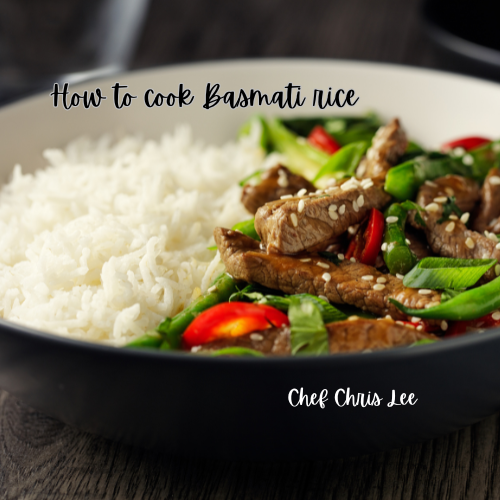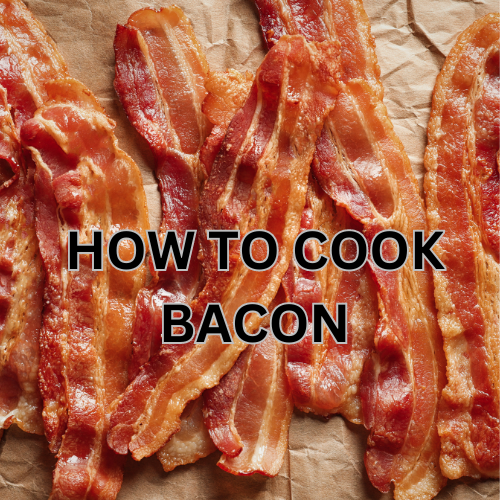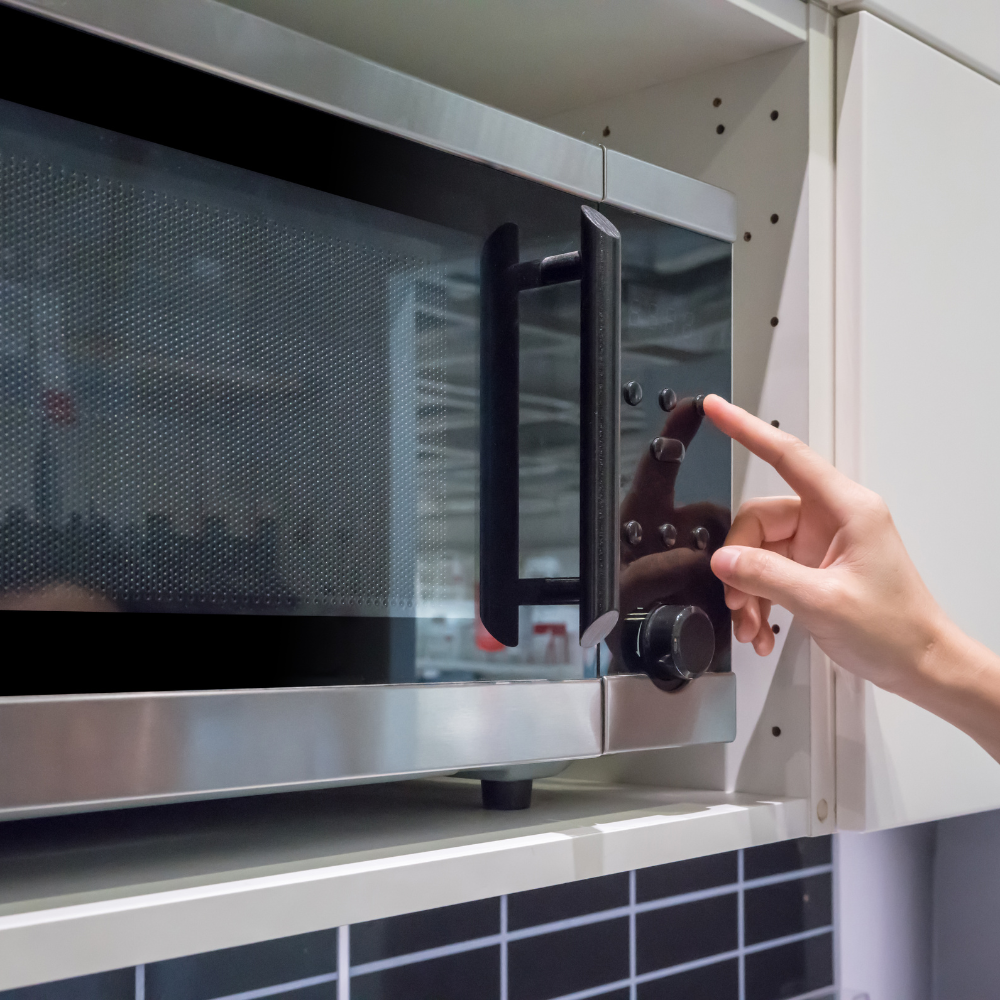HOW TO Sous vide steak
Introduction
Definition and Origin of Sous Vide Cooking
Sous vide is a French cooking method called "under vacuum." It's when you put food in a bag, take the air out, and cook it in water at a precise temperature. This way of cooking was invented by a French chef named Georges Pralus in the 1970s. It makes food taste better, feel nicer, and stay consistent.
What sets sous vide apart from traditional cooking methods is its ability to maintain precise temperatures, ensuring consistent results every time. The concept of sous vide cooking originated from an understanding that precise temperature control plays a fundamental role in achieving optimal culinary outcomes.
By immersing food in a precisely controlled water bath, the sous vide technique eliminates the guesswork associated with traditional methods, such as grilling or pan-searing. This innovative approach allows for even heat distribution throughout the entire cooking process, resulting in impeccably cooked meat that retains its natural juices.
Brief Overview of the Sous Vide Steak Cooking Method
When it comes to preparing steak using the sous vide method, one can achieve unparalleled tenderness and juiciness that is hard to replicate through other techniques. The process starts by selecting the desired cut of steak – be it ribeye, filet mignon, striploin or any other preferred cut – and seasoning it according to personal taste preferences. The seasoned steak is then placed inside a vacuum-sealed bag or pouch along with any desired aromatics or marinades.
The next step involves immersing the sealed steak into a preheated water bath maintained at an exact temperature determined by desired doneness level. The precision temperature control allows your steak to cook slowly and evenly throughout without overcooking or drying out.
This gentle yet controlled environment ensures optimal tenderness while retaining all those precious juices within each succulent bite. Once the steak has reached the desired internal temperature, it is carefully removed from the bag and can be finished by either pan-searing or torching to achieve a beautiful caramelized crust.
The result is a perfectly cooked, restaurant-quality steak that is tender, juicy, and bursting with flavor. Whether you prefer your steak rare, medium-rare, or well-done, sous vide provides the best way to consistently achieve your desired level of doneness with utmost precision.
With this brief overview of sous vide cooking and its application to preparing mouthwatering steaks, we delve further into the science behind this technique in the subsequent section. Understanding how sous vide works will shed light on why it has become a favorite method among chefs and home cooks alike for unlocking the full potential of any cut of beef.
The Science Behind Sous Vide Steak
Explanation of how sous vide works - precise temperature control and vacuum sealing
Sous vide, a French culinary technique meaning "under vacuum," revolutionizes the way we cook steak by providing precise temperature control and utilizing the power of vacuum sealing. The process involves placing the seasoned steak into a vacuum-sealed bag and immersing it in a water bath maintained at a specific temperature using a sous vide machine. This method ensures that the heat is evenly distributed and maintained throughout the cooking process, resulting in perfectly cooked steak.
The key to sous vide cooking lies in its precise temperature control. Unlike traditional cooking methods where external heat sources, such as stovetops or grills, can fluctuate, sous vide maintains a constant temperature.
By setting the water bath at the desired doneness level, whether it is rare, medium-rare, medium, or well-done, you can achieve consistent results every time. This controlled environment allows for even cooking from edge to edge without any risk of overcooking or undercooking.
The second essential element of sous vide cooking is vacuum sealing. By removing all air from the bag containing the steak before sealing it tightly, you create an oxygen-free environment that prevents oxidation and extends shelf life.
Moreover, this sealing process ensures that flavors are locked in while preventing any loss of moisture during cooking. The absence of air also enhances the transfer of heat between the water bath and meat surface for more efficient and uniform cooking.
Benefits of cooking steak using the sous vide technique - enhanced tenderness and juiciness
Cooking steak using sous vide offers several remarkable benefits that elevate its tenderness and juiciness to new heights compared to traditional methods. First and foremost is how precisely controlled temperatures enable perfect outcomes consistently.
With more forgiving leeway compared to conventional techniques like grilling or pan-searing, sous vide allows you to hit the desired doneness precisely, resulting in exceptionally tender steak that is evenly cooked from edge to edge. Furthermore, the prolonged cooking time of sous vide allows tough connective tissues in the meat to break down more effectively while maintaining its moisture.
This slow cooking process results in a steak that is incredibly tender and practically melts in your mouth. The low and slow approach also ensures that the natural juices and flavors of the steak are retained, providing an unparalleled dining experience.
In addition to enhanced tenderness, sous vide cooking preserves the natural juices within the meat. The vacuum-sealed environment prevents evaporation and loss of moisture during cooking.
As a result, even lean cuts of steak remain succulent and juicy upon serving. This characteristic sets sous vide steak apart from other methods, where excessive heat can often lead to dryness or unevenly distributed juices.
With precise temperature control and vacuum sealing as its pillars, sous vide enables aspiring home chefs to achieve restaurant-quality results with ease. The benefits of enhanced tenderness and juiciness make this cooking technique a game-changer for those seeking an exquisite steak experience at home.
Choosing the Right Cut of Steak for Sous Vide
Overview of different cuts suitable for sous vide cooking - ribeye, filet mignon, striploin, etc.
When it comes to sous vide steak, various cuts can be utilized to achieve exceptional results. One popular choice is the ribeye, known for its rich marbling and intense flavor. The high fat content within the ribeye ensures a succulent and tender final product when cooked sous vide.
Another option is the filet mignon, renowned for its unparalleled tenderness. With minimal fat marbling, this cut requires careful attention to prevent overcooking during the sous vide process.
The striploin offers a perfect balance between tenderness and flavor. Its ample marbling adds juiciness while retaining that characteristic beefy taste.
Factors to consider when selecting a steak for sous vide - marbling, thickness, and personal preferences
When determining which steak to use for your sous vide endeavor, several factors should be taken into consideration. Marbling plays a crucial role in enhancing both taste and texture. Steaks with generous marbling distribute flavors more efficiently during the cooking process and result in a more enjoyable dining experience.
Additionally, thickness matters as it directly affects cooking time and temperature adjustments. Thicker cuts require longer cooking times to ensure thorough heat penetration while maintaining desired doneness levels.
Personal preferences such as preferred level of doneness (rare, medium-rare) or specific flavor profiles may influence your choice of steak. As an example scenario: if you desire a flavorful steak with robust marbling from melting fat that creates an explosion of savory juices upon each bite, then opt for a well-marbled ribeye steak cooked via sous vide method.
However, if you prefer exceptionally tender meat that practically melts in your mouth with every forkful but lacks significant marbling, then the filet mignon might be your ideal choice. Each cut has its unique characteristics, and understanding these factors will help you make an informed decision on which cut of steak to choose for sous vide cooking.
By selecting the appropriate cut based on marbling, thickness, and personal preferences, you can ensure that your sous vide steak experience is nothing short of exceptional. The combination of these factors will contribute to the final result's taste, tenderness, and overall satisfaction.
Preparing the Steak for Sous Vide Cooking
Seasoning options - dry rubs, marinades, or simple salt and pepper
One of the great advantages of sous vide steak cooking is that it allows for optimal seasoning penetration, resulting in flavor-packed, succulent meat. When it comes to seasoning your steak for sous vide cooking, you have a range of options to choose from. A popular choice is using dry rubs, which are mixtures of herbs, spices, and sometimes sugars or other flavor enhancers.
Dry rubs can impart complex flavors to the steak while forming a delicious crust when seared later on. Experiment with various combinations such as smoked paprika, garlic powder, cayenne pepper, and brown sugar to find your perfect blend.
Marinades are another option for infusing additional flavors into your sous vide steak. These liquid mixtures typically consist of acidic ingredients like vinegar or citrus juice combined with herbs and spices.
The acid helps tenderize the meat while the other components contribute aromatics and taste elements. For example, a classic marinade for steaks might include soy sauce, Worcestershire sauce, garlic cloves, rosemary sprigs, and olive oil.
Remember to marinate your steak in a sealed bag prior to vacuum sealing it for sous vide cooking. If you prefer simplicity but still want an exceptional result with your sous vide steak preparation, there's nothing wrong with relying on good old salt and pepper.
This minimalist approach allows the natural flavors of the meat to shine through while enhancing them with just a touch of seasoning. Liberally sprinkle kosher salt and freshly cracked black pepper on all sides of the steak before vacuum sealing it.
Vacuum sealing techniques and equipment recommendations
Properly vacuum sealing the steak is crucial in ensuring maximum flavor retention during sous vide cooking. While there are various methods available for achieving this, using a vacuum sealer is generally the best way to ensure a tight seal and eliminate any air pockets inside the bag.
When choosing a vacuum sealing machine, opt for one that provides a strong suction power and has adjustable sealing options. Look for models that offer both dry and moist settings, as well as the ability to stop the suction process manually for delicate foods like marinated steaks.
Additionally, it's advisable to select a vacuum sealer with a wide sealing strip or bar to prevent leaks. Before sealing your steak, make sure it is dry on the surface to promote better adhesion of the bag.
Place the seasoned or marinated steak into a high-quality vacuum-sealing bag designed for sous vide cooking. Lay it flat in the bag to ensure even heat distribution during cooking.
Leave enough space at the top of the bag for proper sealing, typically around 2-3 inches. Then carefully place the open end of the bag into the vacuum sealer and follow its instructions to create an airtight seal around your precious piece of meat.
Preparing your sous vide steak involves careful consideration of seasoning options and proper vacuum sealing techniques. Whether you prefer complex flavors from dry rubs or marinades or simply want to enhance your steak's natural taste with salt and pepper, sous vide cooking allows you unparalleled control over flavor infusion.
By selecting an appropriate vacuum sealer with adequate capabilities, you can ensure optimal results by eliminating any air exposure during cooking. The next section will cover setting up your sous vide cooker for precise temperature control during the cooking process.
Setting Up the Sous Vide Cooker
Explanation of Different Types of Sous Vide Machines
When it comes to setting up your sous vide cooker, you have two primary options: immersion circulators and water ovens. Immersion circulators are the most common type of sous vide machine and consist of a heating element and a water pump.
These devices are designed to be clamped onto a pot or container filled with water, allowing for precise temperature control. On the other hand, water ovens are self-contained units that resemble countertop toaster ovens.
They have a built-in water bath and heating element, making them convenient for those who prefer an all-in-one solution. Both immersion circulators and water ovens have their advantages.
Immersion circulators offer more flexibility as they can be used with any container size or shape, from small pots to large coolers. They are also generally more affordable than water ovens.
Water ovens, on the other hand, provide a simpler setup process as you don't need to worry about finding the right container or attaching anything to it. They also offer better insulation, resulting in less heat loss during long cooking sessions.
Temperature Recommendations for Various Levels of Doneness
To achieve the perfect doneness level when cooking sous vide steak, precise temperature control is crucial. Here are some general temperature recommendations for different levels of doneness: - Rare: 129°F (54°C) - For steak cooked rare, the meat will be deep red in color with an extremely tender texture and noticeable juiciness.
- Medium-rare: 135°F (57°C) - This is the most popular temperature for sous vide steak as it results in a perfectly pink center with a slight hint of redness towards the edges. The meat will be tender and juicy.
- Medium: 140°F (60°C) - At this temperature, the steak will have a pinkish center and a slightly firmer texture. It is still relatively juicy.
- Medium-well: 150°F (66°C) - The steak will have only a hint of pink in the center but will still be tender. It is less juicy compared to medium or medium-rare.
- Well-done: 160°F (71°C) - For those who prefer their steak well-done, this temperature will result in a fully cooked, browned meat with little to no pinkness. However, it may be slightly less tender and juicy than the lower temperature options.
It's important to note that personal preferences may vary, and these temperatures serve as general guidelines. Experimentation and fine-tuning to suit individual tastes are encouraged when exploring the best way to sous vide steak.
Cooking Time and Temperature Guidelines for Sous Vide Steak
When it comes to achieving the perfect doneness in sous vide steak, precision is key. By cooking the steak at specific temperatures for precise durations, you can ensure a consistent and remarkable outcome every time. To aid you in your culinary journey, here is a handy chart showcasing recommended temperatures and corresponding cook times based on desired doneness level:
Doneness LevelTemperature (°F)Cook Time (hours)Rare130-1341-2Medium Rare135-1391-3Medium
To achieve a perfect medium-rare steak, set your sous vide cooker to around 135-139°F and let it cook for about one to three hours. If you prefer your steak on the rarer side, go for a temperature range of 130-134°F and reduce the cooking time accordingly.
On the other hand, if you desire a medium doneness level, aim for approximately 140-144°F with a cook time of two to four hours. Adjust the temperature and duration based on personal preferences.
VII: Finishing Techniques for Sous Vide Steak
A: Searing options after removing from the bag - pan-searing or torching
To elevate the flavor profile of your perfectly cooked sous vide steak, consider employing some finishing techniques after removing it from the bag. Two popular options for achieving an exquisite sear are pan-searing and torching.
For a classic and familiar approach, heat a cast-iron skillet over high heat until it is smoking hot. Pat the steak dry with paper towels to remove any excess moisture, then sear it in the hot skillet for about one minute per side.
This rapid searing will create a beautiful crust while preserving the tender interior. Alternatively, if you seek a quick and precise method, using a culinary torch can provide an evenly caramelized finish.
Move the flame of the torch across the surface of the steak until it develops a golden brown coloration. Be cautious not to overdo it as excessive charring can overpower the delicate flavors.
B: Resting period before serving to ensure optimal flavor distribution
After completing your chosen finishing technique, allow your sous vide steak to rest for a few minutes before slicing into it. This resting period is crucial as it allows for optimal flavor distribution throughout the meat. During cooking, juices migrate towards the center of the steak, and resting helps redistribute them evenly.
Cover your cooked steak loosely with aluminum foil and let it rest on a cutting board or plate for approximately five minutes. This short break ensures that each bite of your sous vide masterpiece delivers an explosion of succulent flavors in perfect harmony.
VIII: Serving Suggestions and Pairings with Sous Vide Steak
A: Classic accompaniments like mashed potatoes or roasted vegetables
Now that you have mastered how to sous vide steak to perfection, you may be wondering what delightful accompaniments can enhance this delectable dish further. Classic pairings such as creamy mashed potatoes or roasted vegetables provide ideal companionship on your culinary adventure. The velvety texture of buttery mashed potatoes harmonizes excellently with the tender and juicy sous vide steak.
Consider adding a sprinkle of fresh herbs, like chives or rosemary, to elevate the flavors and create a visually stunning presentation. If you prefer a lighter option, roasted vegetables are an excellent choice.
The caramelization that occurs during roasting amplifies the natural sweetness of veggies like carrots, asparagus, or Brussels sprouts. Drizzle them with olive oil, add a pinch of salt and pepper, then roast until they achieve a delightful crispness.
Conclusion
Congratulations! You now possess the knowledge and skills to master the art of sous vide steak cooking. By following precise temperature guidelines based on desired doneness levels and applying appropriate finishing techniques such as searing or torching, you can create steak dishes that are tender, succulent, and bursting with flavor.
Remember to give your steak a rest after cooking for optimal flavor distribution before diving into its mouthwatering goodness. And don't forget to pair your sous vide steak with classic accompaniments like creamy mashed potatoes or flavorful roasted vegetables for a complete dining experience.
Embrace your inner culinary maestro and experiment with different cuts of steak, seasonings, and serving suggestions to make each sous vide adventure uniquely yours. So go forth confidently into the kitchen armed with this newfound knowledge - may your sous vide steaks always leave you savoring every bite in pure satisfaction!





























